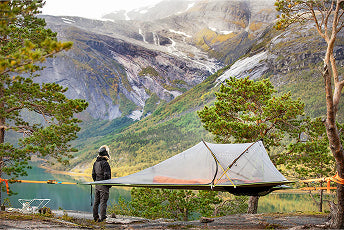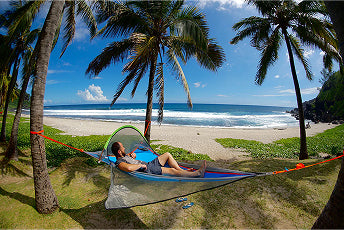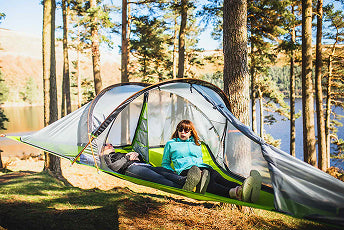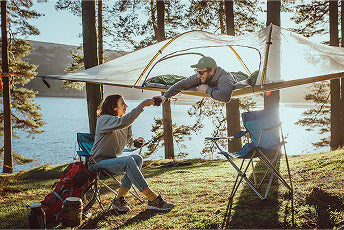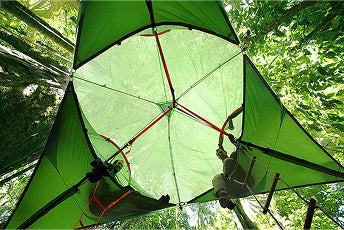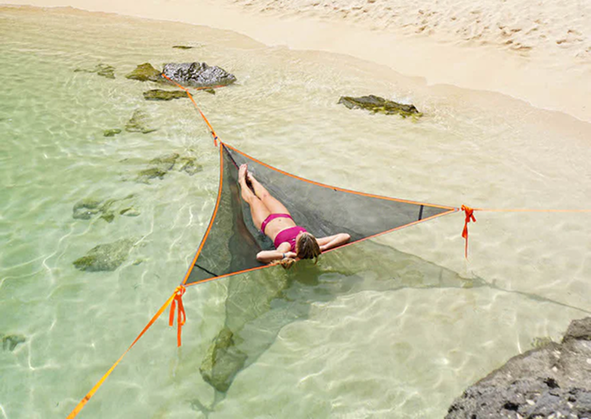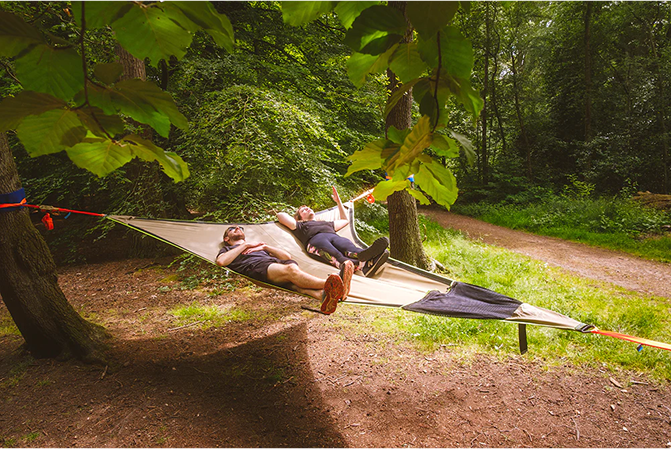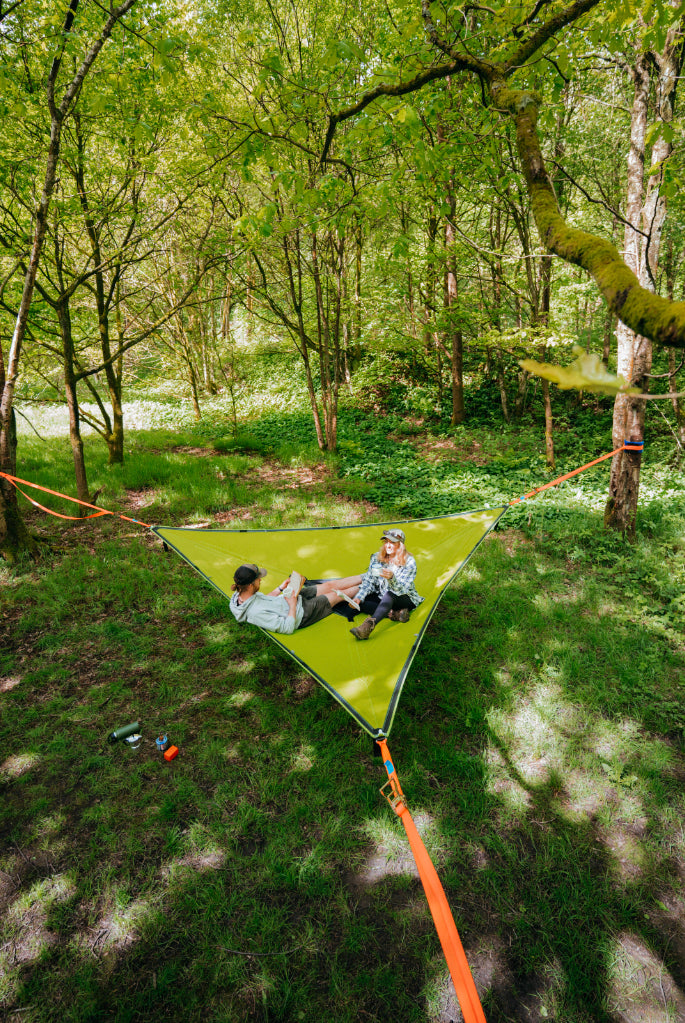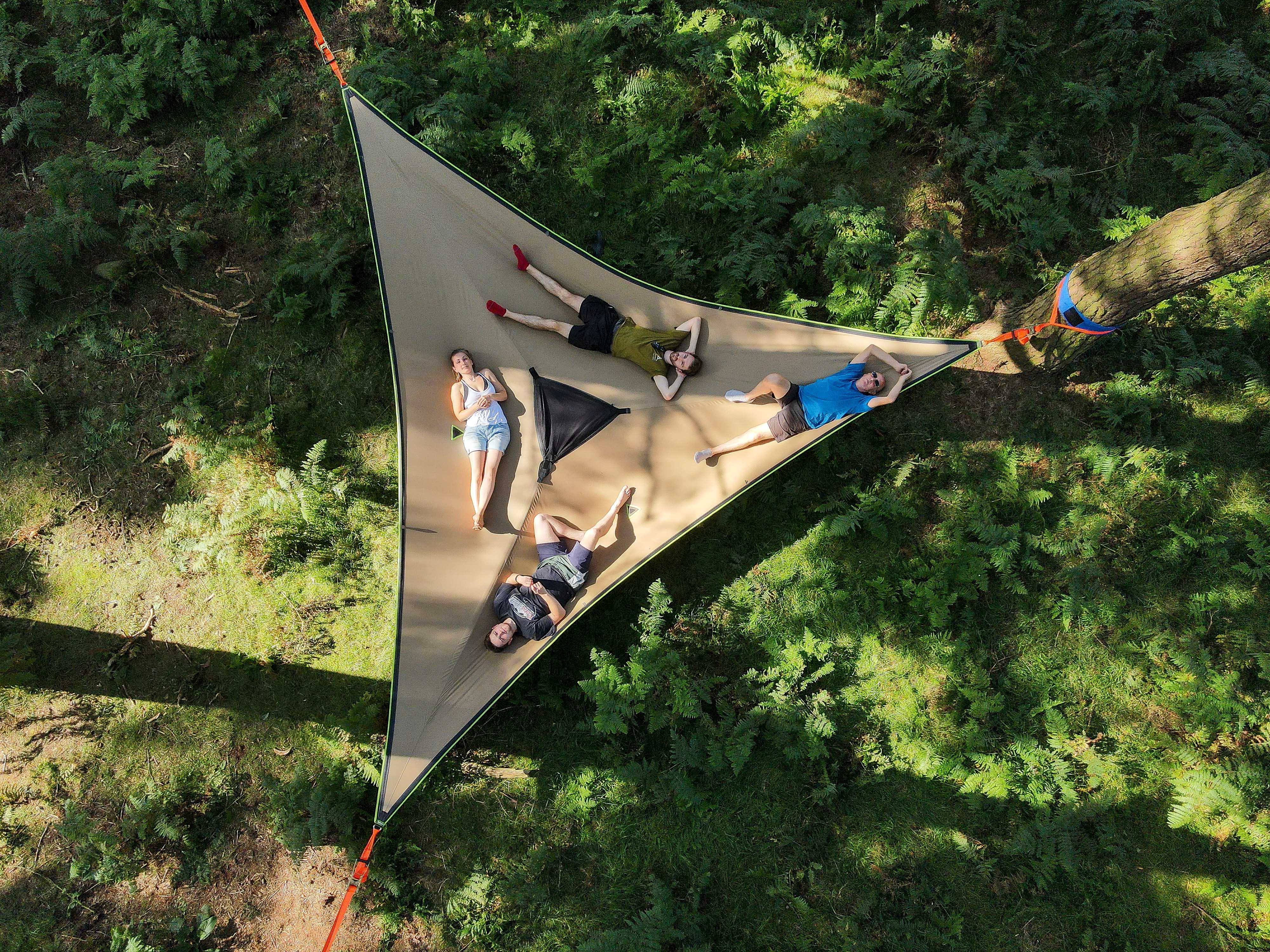If you're a Tentsile user and adventurer, the chances are you're thinking about taking your Tentsile into ever more remote and challenging locations - the kinds of places you can't take your car and will have to carry everything on your back. It might also be that you just want to reduce the weight of your setup so that you can fit in more luxuries and end up with the same weight overall. Whatever your reason, we've got five great tips to help you achieve the super light setup of your dreams, courtesy of our arborist guru, Syd Howells.
1. Take a Trillium
If weather and location permit, keeping the amount of tent you carry as small as possible is one rapid and straightforward way of losing pack weight. The Trillium is the best triple hammock on the market and is reinforced with webbing for safety and comfort, so if you can be sure of a dry and insect-free night, you'll sleep soundly under the stars with your low-weight pack resting in plenty of space beside you. If, however, you're expecting rain or uninvited six-legged guests, you can stick to a Stingray or Connect and follow the tips below to minimise the weight that entails.

2. Don't take three ratchet handles
Ratchet handles are great, but they're heavy. If you can learn how to pitch your Tentsile using two ratchet straps, or even just one, you'll need to do very little else in the way of losing equipment to keep your load light. If you put time into finding a location with as even a triangle of sturdy trees as possible, you can tie the Tentsile into position using just straps and knots. The closer together the trees are, the shorter the straps you'll need, and that saves weight as well. Using an app such as Animated Knots, teach yourself a bowline knot, as this is easy to untie even after being loaded and tightened. This allows you to tie two corners of the Tentsile using just the ratchet straps, ensuring you maintain a good degree of tension by hand. Using the ratchet with the strap on the final corner provides the necessary tightening to keep your tent safely and comfortably suspended all night long.
3. Daisy chains are more than just flowers
If you'd rather try rigging with something other than ratchet straps, your best bet is to get hold of a rated daisy chain. This is a piece of climbing equipment that's essentially a series of strong loops sewn together. Look for one rated to at least 22 kilonewtons for confidence in your life support - Sterling Rope make a great one called the BARC, available here. Once you've got one, all you need to do is put a carabiner into the D ring on the corner of your Tentsile, wrap the BARC around the tree, and clip the carabiner into the two loops that are the best length for your setup. Repeat this for the second tree and use a ratchet on the third for a setup that is even lighter than using ratchet straps without ratchet handles.

4. Learn to read your location
A bit of knowledge about your location and the way your Tentsile fits in with the size and layout of the trees will pay dividends in any setup, but especially so when you're trying new methods like the ones above. We recommend putting in the time to get to know your location with a full setup before you go light, or, if you want to try your lightweight setup on a completely new adventure, treat yourself to some good forest hours beforehand, pitching your tent in different types of trees, on different slopes and with varying thicknesses of trunk and spacing between trees. This will give you a good feel for your Tentsile and the way all the bits and pieces work, and you won't be stumped by anything when it comes to setting up in a new and exciting way.
5. Remember to shave off extra grams
As with any lightweight camping setup, the rules about shaving off extra bits of weight apply. If you're heading out in good weather, leaving your rain fly behind will save some grams, and having as much of your gear as possible in titanium is far preferable to other, heavier materials. In warm weather, you can take a chance on sleeping without a mat underneath you, as the tents are supportive enough without, and the mats are really just for insulation unless you're particularly attached to a certain softness of bed. Throw in a light sleeping bag or silk sleeping bag liner, and you've got yourself a lightweight and comfortable adventure. Please let us know how it goes - we love your stories and pictures!

